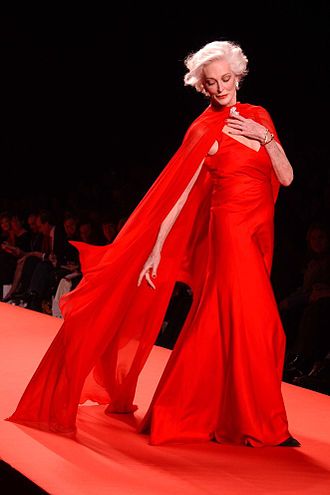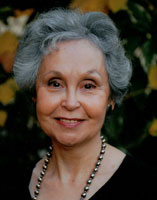
Courtesy of wikipedia.org
The woman seated opposite me in the coffee shop was more than a decade younger than I was. Long have I admired her talent and leadership in the artistic community. Naturally, I was stunned when she swallowed as if a peanut had lodged in her throat and said, “I’m going blind.”
A momentary silence fell between us. Should I be the first to break it or allow her to make the decision? My concern got the upper hand. “Tell me what’s happened,” I prompted.
The invitation seemed to be one my companion wished to hear. After that, my obligation was to listen
Twenty-somethings have yet to learn of the courage needed to grow old. The embarrassment seniors can feel is beyond their imagination– the loss of confidence in one’s body and the gnawing fear of growing dependent.
Two New York cover models have grappled with the transition and triumphed. Carmen Dell’Orefice (91) and Beverly Johnson (69) shared the cover of New You, recently. Dell’Orefice explained her success. “I stood up for age. I owned the territory.” Beauty being her trade, she admits she treats her body with respect. She gives the same advice to others. “That is what we should do with ourselves: nurture ourselves, love ourselves, and give that kind of energy to ourselves.”
Johnson faced unique obstacles as a model because she is black. She winced recalling one incident early in her career. Finishing a swimsuit layout at an upscale hotel, she recalled that the manager had the pool drained the moment she emerged from the water.
Johnson soon discovered that to succeed in her profession she’d have to find cracks in doors that otherwise would be slammed in her face. By sheer dint of will, she rose to the top of her profession, overcoming the obstacle of being black and now being a senior. The struggle exacted its price, of course. It robbed her of self-confidence, leaving her sometimes to suppose her achievement was the result of tokenism. Below the surface of the beauty industry, she once mused, is “an ugly systemic racism…”
The prejudice she faced in her career sits upon a myth. Race does not exist. The variances people see aren’t genetic but those created by “historical, contemporary, social, economic, educational, and political circumstances.” Nonetheless, the illusion is so real for some, they would bar people with certain characteristics from fully participating in our society.
Any community that pits one group against another plays a fool’s game. It shatters the basic tenet of cohesiveness and shackles the economy, creating an underclass designed to be a burden rather than an asset. Crime is the consequence of neglect. Even so, people exist who, for the sake of preserving an imagined superiority, would prefer to provide the underdog a jail cell rather than a job. Meanwhile, says one social observer, the rich are busy supporting each other at the expense of the rest. (“The Social Network,” by Chloe Malle, Town&Country, Nov. 2022, pg. 48.)
Life is fraught with cruelties and complications, even for twenty-somethings. To persevere takes courage. What’s more, the longer a person lives, the greater the challenge. Ageism is a cruel blindspot among us, a prejudice we allow to exist, and a reason why the old feel vulnerable.
Prejudice should be easy to conquer as it’s human-made. Imagine the world we could create If we took Dell’Orefice’s advice to a grand scale. Suppose we nurtured our society the way we desire to be nurtured. Freed from notions that foster hate, we might discover we have more room for compassion. The emotion is one we need in abundance, not only to help others but to receive kindness when fate thrusts upon us afflictions not of our making, like blindness and old age.
(Special note: If my blog readers have yet to connect with my YouTube book interviews on “Just Read It,” please drop by to watch a delightful interview with the best-selling author of thrillers, Phillip Margolin.)
